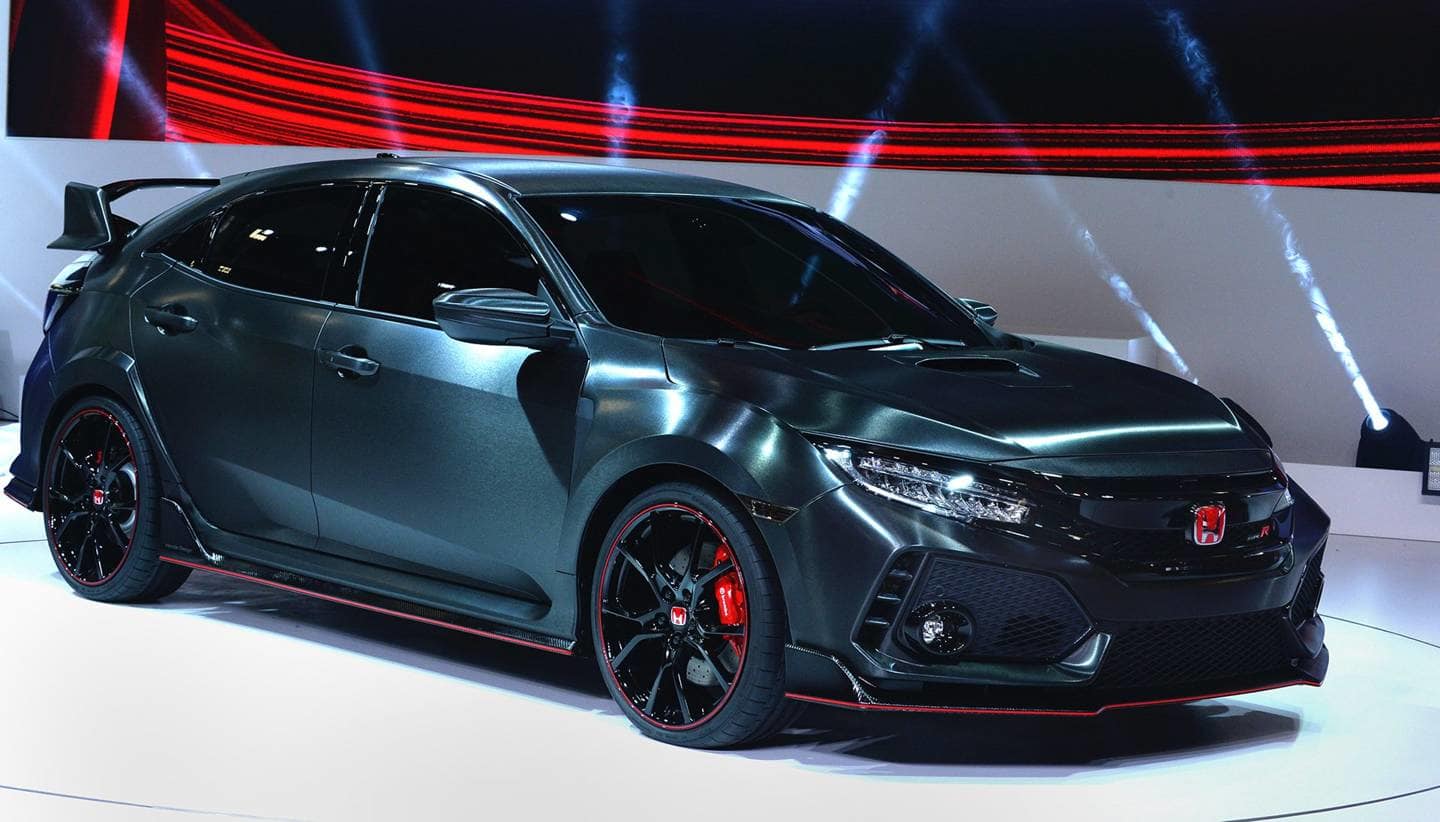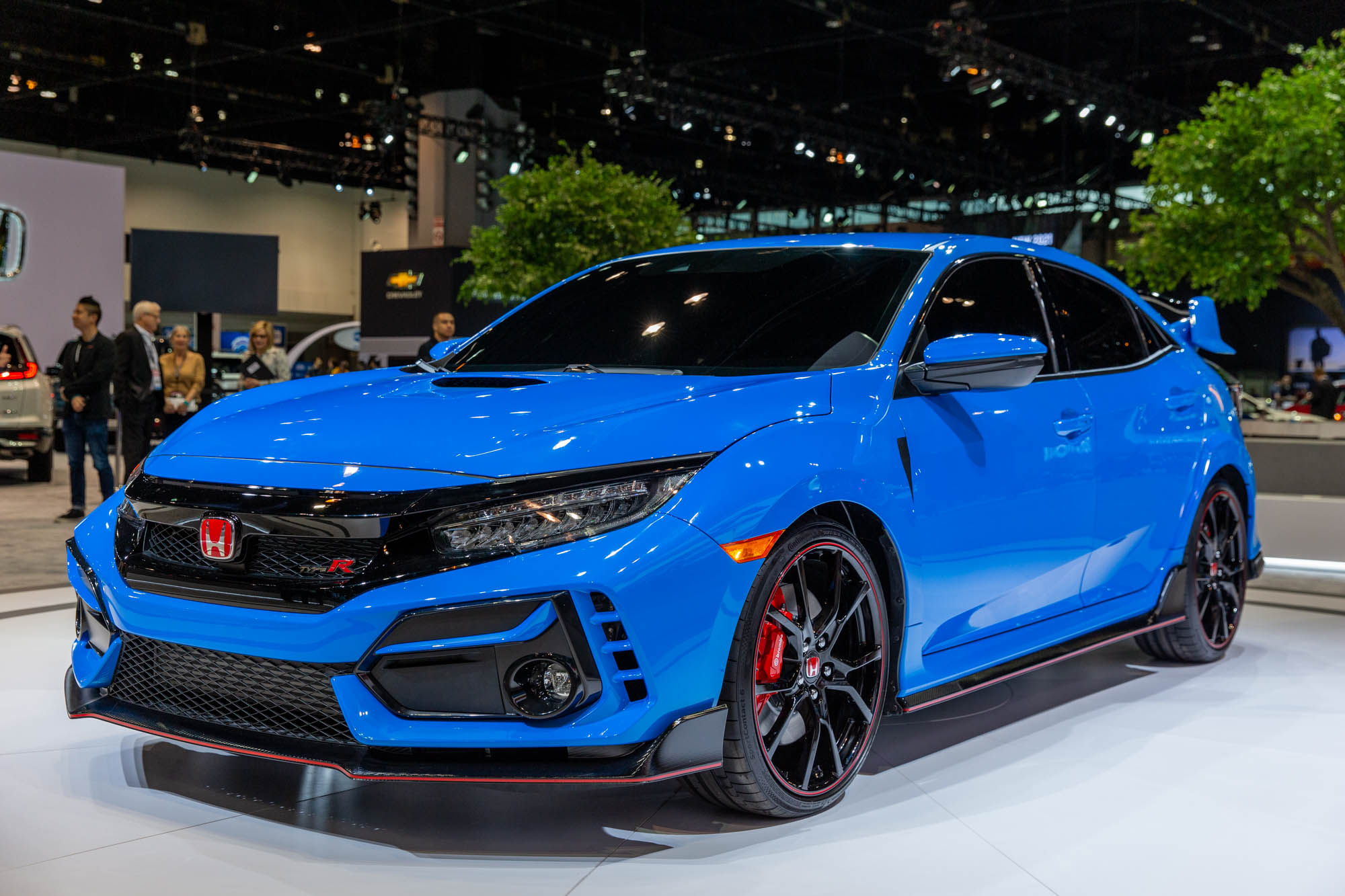

With these tweaks being incremental, I believe I’d have to be on a track to tell the differences, and perhaps driving the older Type R back to back. Could I tell the difference? I can’t honestly say I did during my time, which was limited to street driving. What’s interesting is that the Type R wasn’t lacking those characteristics in our previous track testing, especially when compared with the Volkswagen Golf R. The claimed results are improved steering accuracy at turn-in, more mid-corner stability and increased traction powering out of corners. Rounding out the suspension changes are updated adaptive shock absorbers now able to sample road conditions 10 times faster than before for more accurate reactions. In the rear, the lower B-arms have new bushings that stiffen lateral loads by 8% for improved toe-in when cornering. The front suspension has a new lower ball to reduce friction and updated front compliance bushings. The brake pedal stroke has been reduced by 17%, which means it takes less push to engage the brakes. This floating design improves heat dissipation and braking performance during high-stress driving by making the center hat out of aluminum instead of using one iron piece. The new two-piece brake rotors from Brembo replace the single-piece design. To my eyes, the smoothed texture of the lower bumper trim versus the previous honeycomb inserts is far less busy and cheap looking. Up front, the bumpers are redesigned and there’s a larger grille opening for additional cooling that Honda says reduced coolant temperatures 18 degrees in its testing. They’re meaningful updates that take an already track-happy car and give it more directness and capability. Ninety percent of the enhancements make the 2020 Type R a better street and track car. 2018 Volkswagen Golf R What’s Changed on the Civic Type R for 2020? 2020 Honda Civic Type R Related: StaR Performers: 2018 Honda Civic Type R Vs.
#2020 HONDA TYPE R UPDATE#
Now in its fourth model year, the 2020 Type R hatchback gets some love with an update that includes new performance goods, a few interior tweaks and one love-it-or-hate-it feature that might be annoying enough to make you look for a 2019-or-earlier Civic Type R.

Versus the competition: Exuding poise, balance and loads of grip, the front-wheel-drive Type R performs as well as or better than its all-wheel-drive rivals.īelow $40,000, you’ll have a hard time finding anything more track ready and fun than the 306-horsepower, six-speed-manual-only Honda Civic Type R. Thankfully, though, you can physically disable the connection behind the glovebox if you so wish.The verdict: The Type R’s on-track credibility is boosted for 2020, but a new augmented engine sound is a head-scratcher. As you know from the EcoBoost-engined Mustang, the ASC amounts to fake engine noise pumped into the cabin. The GT and Sport Line feature Active Sound Control, a system designed “to enhance the driving experience even further” according to Honda. 320 PS and 400 Nm (316 horsepower and 295 pound-feet) are the ratings for the Old Continent. As far as the hardware is concerned, the 2.0-liter VTEC Turbo doesn’t differ much from the previous model year. Lower down the spectrum, the GT and Sport Line are treated to a new color in the guise of Racing Blue. To put it bluntly, it costs more than a V8-engined pony or muscle car. “A unique proposition in the performance hatchback segment,” the Limited Edition is available as a 2021 model in the United States for the princely price of $43,995. Sunlight Yellow is how it’s called, and Honda won’t sell it even as an option on lower trim levels. 20-inch forged BBS alloys open the list of upgrades, along with Michelin Cup 2 super-sticky rubber, optimizations to the Adaptive Damper System, and an exclusive exterior color. The Limited Edition – which could use a more appealing name if you ask me – will number 100 units for the European market. Sport Line is how it’s called, and the reason it exists is “to appeal to customers who want a stealthier look from their performance hatchback.” There is nothing wrong with a visual makeover consisting of a low-deck rear spoiler instead of the high-level wing and a black interior, but then again, driving-centric customers tend to prefer substance over style. But first, let’s talk about another new arrival.


 0 kommentar(er)
0 kommentar(er)
